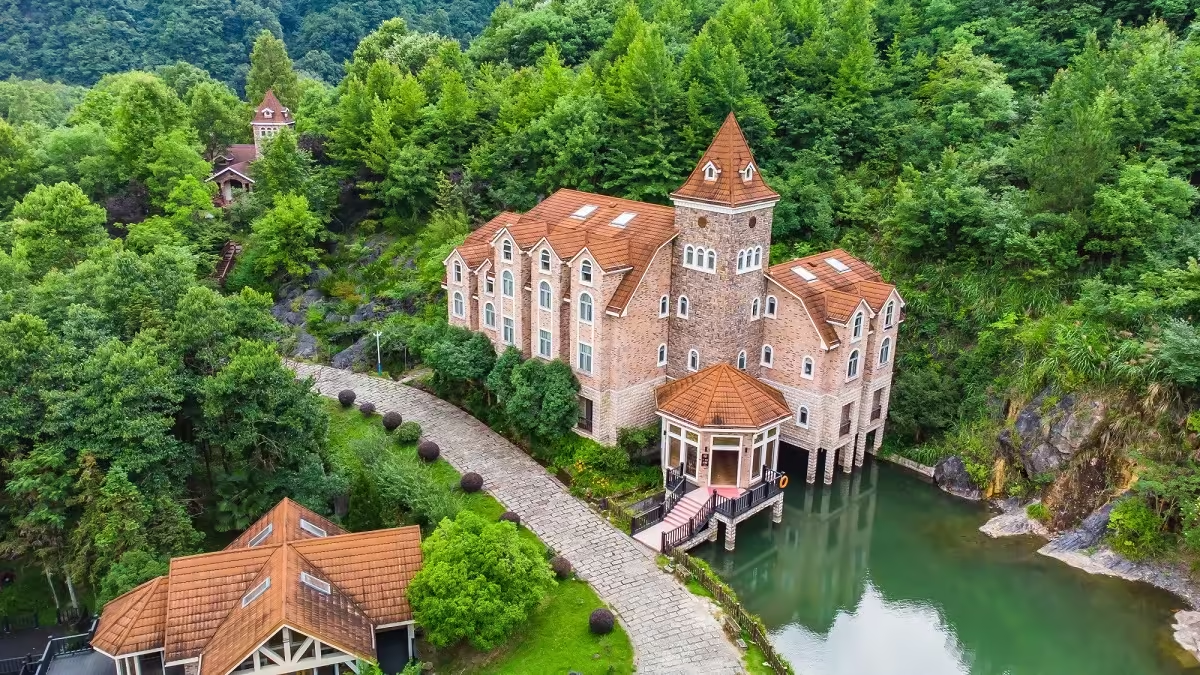The East Huangshan Mountain Tourism and Resort Area (东黄山旅游度假区) is nestled at the eastern foothills of Huangshan National Forest Park, serving as the eastern gateway to Huangshan Mountain. Spanning approximately 31.6 square kilometers, this resort area exudes the charming atmosphere of a European-style town infused with a strong maritime flavor.
Located in the town of Tanjiqiao, the East Huangshan Tourism and Resort Area connects three directions: east, south, and north. The Heping-Tonghuang Expressway runs north-south, intersecting with National Road 205 to the east, making East Huangshan a vital hub for travelers heading to Jiangsu, Zhejiang, and Shanghai.
The scenic beauty of the southern Anhui mountainous region is part of the northern extension of Wuyi Mountain, characterized by ever-changing landscapes. As the highest point in the southern Anhui mountains, Huangshan naturally acts as a watershed between the Yangtze River and the Xin’an River, further enhancing the area’s allure.
Travel Information about the Tourism and Resort Area
Tickets and Opening Hours
Admission: Free (activities and services within the resort area may incur additional charges).
Opening Hours: 7:30 AM to 5:30 PM.
Best Time to Visit
The area offers beautiful scenery throughout the year. Spring is perfect for outdoor activities, summer for flower viewing and escaping the heat, autumn for admiring the colorful leaves, and winter for experiencing the snow-covered mountains.
Transportation to the Resort Area
Location: Huangshan Tea Plantation, Huangshan District, Huangshan City, close to the eastern gateway of Huangshan Mountain.
Transportation: From Tunxi Bus Station, take a bus to Tanjiqiao (buses run hourly). After arriving in Tanjiqiao, a taxi ride of approximately 10 minutes will get you to the resort area.
Attraction Ratings
- Cultural: ★★★
- Unique Features: ★★★
- Leisure: ★★★
- Beauty: ★★★★
- Romantic: ★★
- Excitement: ★★
Highlights of the Tourism and Resort Area
Shanghai Huangshan Tea Plantation
The Shanghai Huangshan Tea Plantation is the core development area of the East Huangshan Tourism and Resort Area, covering approximately 3.5 square kilometers. This site serves as a “enclave” for Shanghai in Anhui province. Since 1965, nearly ten thousand educated youth have worked and lived here, earning it the nickname “Ten Thousand Educated Youth, One Hundred Thousand Acres of Mountains.” The area is rich in diverse cultures, including Haipai culture, educated youth culture, and tea culture, and it was once referred to as “Little Shanghai of Anhui.” This destination is renowned as a national-level tourism resort, particularly in the Yangtze River Delta region, featuring a unique blend of business conferences, sports and leisure activities, health and wellness retreats, and themes related to the educated youth movement.
Xitan Ancient Village
Xitan Ancient Village, located adjacent to the Huangshan Tea Plantation in Shanghai, showcases the typical architectural style of the Huizhou region. Nestled at the southern foot of Phoenix Mountain, the village is graced by the meandering Mengjia River that winds through its landscape, while the ancient Huizhou Road runs through the village.
The village features several traditional Huizhou residences and temples, with the most famous being the Hong Temple. Named for its red exterior, the Hong Temple, also known as the Guandi Temple, was originally a place for people to pray for good weather and worship the Bodhisattva but has faced destruction over time. Additionally, the village is home to ancestral halls of the local residents, including the Wang Family Ancestral Hall (Wang Gong Temple) and the smaller Wang Family Hall, which reflect the village’s rich cultural heritage.
Huizhou-Qingyang Ancient Road
The Huizhou-Qingyang Ancient Road extends from the city of Huizhou to Qingyang County. It starts at the north gate of She County, heading northwest, passing over the Wanniang Bridge, and continuing through Futi to Xucun. From Xucun, the route travels north, passing by Wuchang Temple, Maoshe, and Chadang, leading to Ruoling Pass. After crossing Ruoling, the road enters the territory of Taiping County and proceeds to Shanglingjiao, passing through Tanjia Bridge, Ganyangli, Qiji, Malandi, and Sankou, ultimately reaching Xianyuan.
This ancient route meanders westward to Gantang, then turns northwest, following the Yangxi River to Guangyang, and continues northward directly to the city of Qingyang. The road is primarily composed of stone slabs, with a smooth surface and a width of 1 to 2 meters. Historically, it served as a strategic thoroughfare leading to the Jiangsu and Anhui provinces along the Yangtze River.

